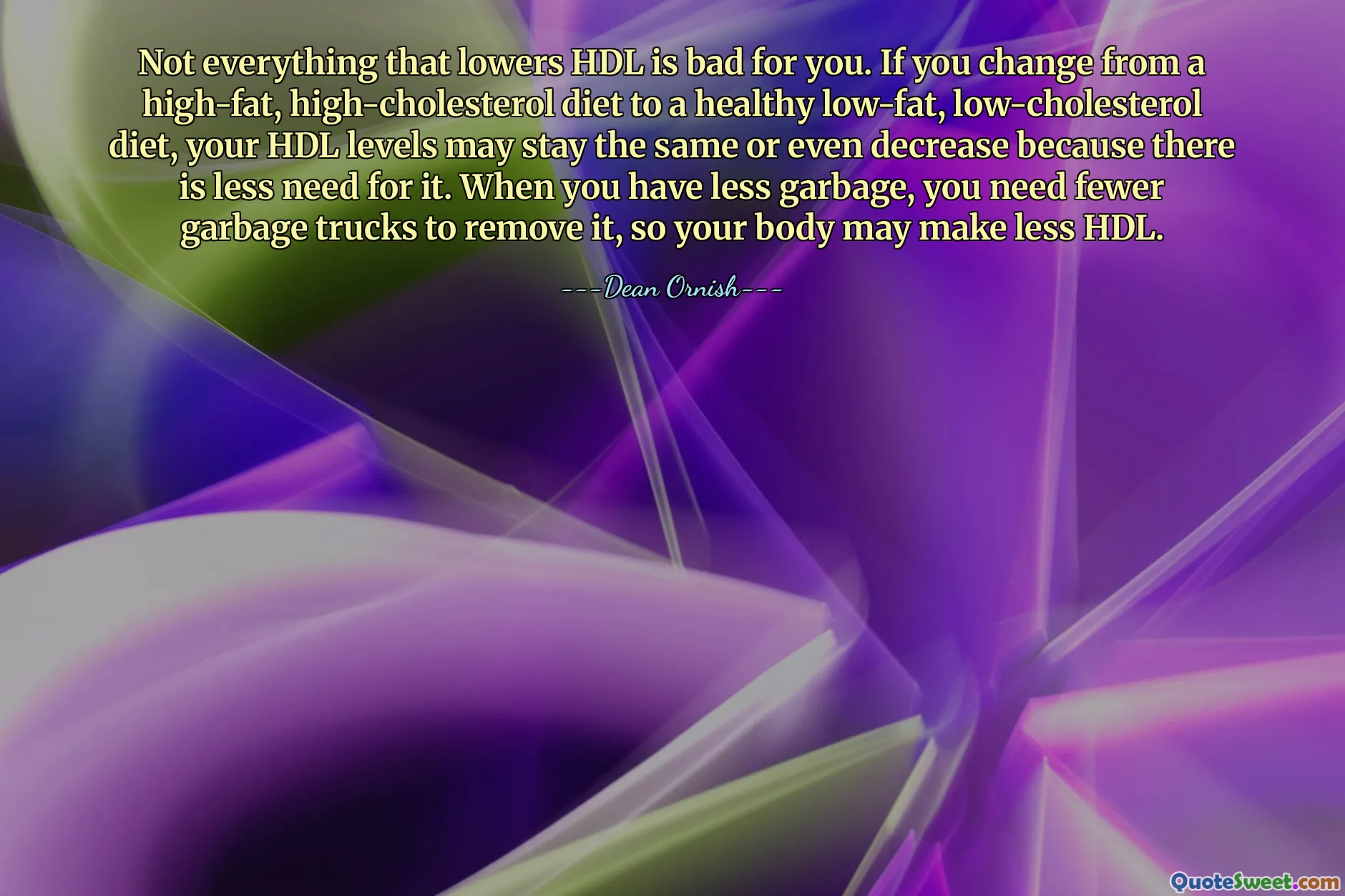
Not everything that lowers HDL is bad for you. If you change from a high-fat, high-cholesterol diet to a healthy low-fat, low-cholesterol diet, your HDL levels may stay the same or even decrease because there is less need for it. When you have less garbage, you need fewer garbage trucks to remove it, so your body may make less HDL.
This quote offers a nuanced perspective on cholesterol and its components, particularly HDL, often labeled as "good cholesterol." Common wisdom suggests higher HDL is always better, but the quote challenges this oversimplification by explaining that the context of the change in HDL levels is crucial. When one improves their diet from high in fat and cholesterol to a healthier, low-fat, low-cholesterol version, it logically follows that the body produces less HDL because there is less harmful substance to clear out. The metaphor of garbage and garbage trucks vividly illustrates this biological process, making it easier to understand that HDL functions as a transporter or cleaner of fat particles in the bloodstream.
This insight highlights the importance of interpreting lab values in context rather than in isolation. It encourages people not to fear a lowering of HDL blindly but to consider what underlying changes and lifestyle improvements are happening. Health is a dynamic balance, and numbers alone don't tell the full story. The idea also challenges the typical focus on numeric goals, reminding us that behind every lab value is a physiological mechanism adapting to the body's needs.
In a broader sense, this quote promotes a more holistic and systems-based view of health. It emphasizes that metrics and measurements are tools – not definitive judgments. As we push toward healthier living, understanding the "why" behind the numbers helps reduce anxiety and supports better decision-making. Overall, this message empowers patients and healthcare providers to focus on comprehensive wellness rather than isolated lab targets.











